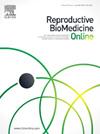Decision-making in women who considered planned oocyte cryopreservation: decision satisfaction or regret?
IF 3.7
2区 医学
Q1 OBSTETRICS & GYNECOLOGY
引用次数: 0
Abstract
Research question
Among women who considered planned oocyte cryopreservation, does decision regret differ between those who pursued planned oocyte cryopreservation and those who did not?
Design
A survey was e-mailed to all women who presented for an initial consultation for planned oocyte cryopreservation between January 2016 and December 2021 using a secure REDCap platform. The survey comprised questions on demographics, reproductive planning and the validated Decision Regret Scale (DRS). Univariable and multivariable models were fitted to compare decision regret in the group who had proceeded with planned oocyte cryopreservation with the group who had not. A sentiment analysis was employed to characterize the emotional tone of respondents.
Results
In total, 338 respondents met the eligibility criteria. Of these, 178 (52.7%) patients had proceeded with planned oocyte cryopreservation and 160 (47.3%) had not. The groups were similar in age, race, ethnicity and education. Respondents who had proceeded with planned oocyte cryopreservation were more likely to be single, to anticipate starting a family at ≥39 years of age, and to consider the use of donor spermatozoa to be an acceptable option. Respondents who had not proceeded with planned oocyte cryopreservation more frequently reported starting attempts at conception since their consultation. A higher proportion of respondents who had not undergone planned oocyte cryopreservation experienced moderate-to-severe regret with their decision compared with respondents who had undergone at least one cycle of planned oocyte cryopreservation (50% versus 13%; P < 0.001). There was a correlation between decreasing number of cryopreserved oocytes and increasing DRS score (R = -0.41, P < 0.001).
Conclusions
Women who consider planned oocyte cryopreservation but do not proceed with it experience substantial decision regret. The DRS score was highest among respondents who had not proceeded with planned oocyte cryopreservation, and respondents who had undergone at least one cycle of planned oocyte cryopreservation that resulted in a low number of cryopreserved oocytes.
考虑计划性卵母细胞冷冻保存的妇女的决策:决策满意还是遗憾?
本文章由计算机程序翻译,如有差异,请以英文原文为准。
求助全文
约1分钟内获得全文
求助全文
来源期刊

Reproductive biomedicine online
医学-妇产科学
CiteScore
7.20
自引率
7.50%
发文量
391
审稿时长
50 days
期刊介绍:
Reproductive BioMedicine Online covers the formation, growth and differentiation of the human embryo. It is intended to bring to public attention new research on biological and clinical research on human reproduction and the human embryo including relevant studies on animals. It is published by a group of scientists and clinicians working in these fields of study. Its audience comprises researchers, clinicians, practitioners, academics and patients.
Context:
The period of human embryonic growth covered is between the formation of the primordial germ cells in the fetus until mid-pregnancy. High quality research on lower animals is included if it helps to clarify the human situation. Studies progressing to birth and later are published if they have a direct bearing on events in the earlier stages of pregnancy.
 求助内容:
求助内容: 应助结果提醒方式:
应助结果提醒方式:


